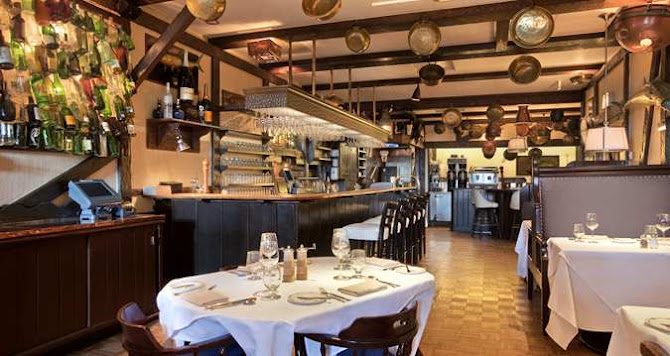In 1932, the Cape Cod Room became Chicago’s first choice for fresh fish and seafood and the nation’s first themed restaurant. Twenty years later, seen laughing over drinks, newlyweds Marilyn Monroe and Joe Dimaggio would carve their iconic initials into the bar’s world-famous wooden counter.
On December 6th, 1933, the day after prohibition was repealed, Coq d’Or Restaurant & Lounge opened in favor of thirsty patrons eager to purchase a 40¢ whiskey. In the 1940s, it became a local hangout for reporters, politicians, and even some notorious characters, though it never lost the true Chicago crowd.
In 1940, The Drake sign was illuminated, solidifying the hotel’s rightful place in the most internationally recognized skyline. The 40s proved to be a decade of colossal change, both at The Drake and around the world. The Palm Court changed seasonally to accommodate the changing palate of the sophisticated patrons. In the winter, to set the holiday tone, the fountain was replaced with a 2,000-pound fireplace. In the summer, to get the cool lake breeze, the ceiling was open and the fountain was filled with fresh water.
Throughout the 50s and 60s, the political and social climate of Chicago was evolving, and The Drake was inclined to develop alongside the city. By the 1970s, the John Hancock Center towered over The Drake, providing a frame of evolution for the half-century hotel.
In 1980, Hilton International acquired The Drake Hotel and restored it to its former glory. The Drake Hotel guests see today provides the grandeur of the past and accommodations fitting for today’s high society.
"As part of The Drake's comprehensive renovation plan, the Cape Cod Room will be closing permanently after New Year's Eve dinner service on December 31, 2016. After the Cape Cod closing, its iconic dishes, including Bookbinder's Soup - Original Recipe, oysters Rockefeller, crab cakes, Cape Cod seafood boil, and baked Alaska, will be featured menu items in the Coq d’Or Restaurant & Lounge to continue to enjoy. As well, the memorabilia will be preserved within the hotel."
The Drake Hotel.Edited by Dr. Neil Gale, Ph.D.















